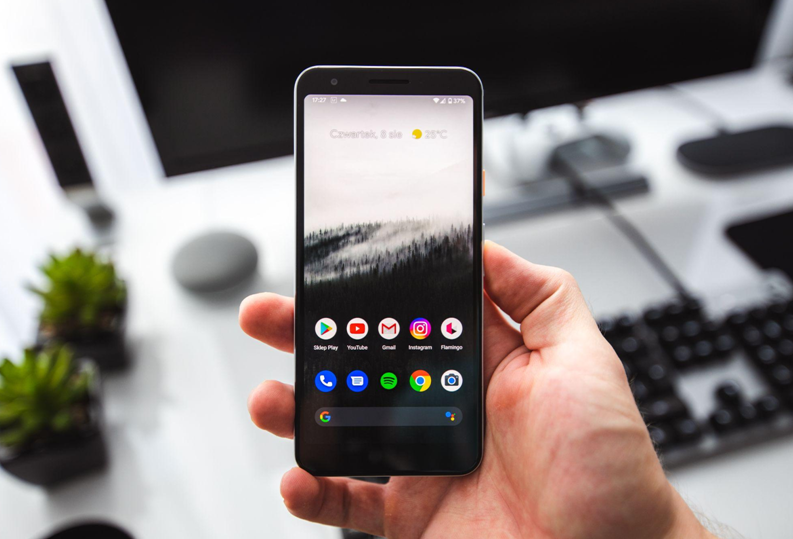Introduction: Understanding the Mobile Gaming Landscape
In the rapidly evolving world of mobile gaming, the debate between Android and iPhone devices remains a hot topic. This article delves into the nuances of each platform, examining their strengths and weaknesses in the context of online gameplay. We’ll explore various aspects like performance, game availability, user experience, and more to give you a comprehensive understanding of what each platform offers to avid gamers.
Hardware Capabilities: The Foundation of Gaming Performance
Android Devices: Diverse Options with Varying Performance
Android’s diverse ecosystem offers a wide range of devices, each with different hardware capabilities. High-end Android phones boast powerful processors and graphics units, making them suitable for demanding games. However, the varied hardware across devices can lead to inconsistent gaming experiences. Lower-end models might struggle with graphics-intensive games, affecting gameplay smoothness and responsiveness.
iPhone Devices: Consistent and Optimised Performance
Apple’s iPhone, known for its optimised hardware, provides a more uniform gaming experience. The synergy between iPhone’s hardware and iOS ensures that games run smoothly, even on older models. iPhones typically have less raw power than top-tier Android devices but make up for it with efficiency and optimization, delivering consistent performance across the board.
Game Availability: Exploring the Gaming Ecosystem
Android’s Open Platform: A Haven for Indie Developers
Android’s open ecosystem is a breeding ground for creativity, allowing indie developers to experiment and publish games easily. This openness results in a vast and varied gaming library, with numerous exclusive titles. However, the quality and security of games can vary, requiring users to be discerning in their choices.
Apple’s Curated Experience: Quality over Quantity
Apple’s App Store is known for its stringent quality control, ensuring that games meet high standards. This curated approach often means fewer titles but guarantees a higher overall quality. iPhone users benefit from this focus on excellence, enjoying a selection of games that are generally well-made and secure.

Online Connectivity: Multiplayer Gaming and Community Engagement
Android: Compatibility with a Wide Range of Networks
Android devices support a wide array of network technologies, making them adaptable to different online gaming environments. This versatility is particularly beneficial in regions with varied network infrastructures, ensuring that gamers can stay connected in most conditions.
iPhone: Reliable and Smooth Online Play
iPhones are known for their stable and efficient online connectivity. Apple’s focus on providing a seamless online experience translates into smooth and reliable multiplayer gaming. The integration with Apple’s ecosystem, including services like Game Center, further enriches the social aspect of online gaming. For UK gamers looking to indulge in online gaming , several sites offer excellent experiences on both Android and iPhone. These platforms are optimised for mobile play, ensuring smooth gameplay, easy navigation, and secure transactions. Whether you prefer Android’s flexibility or iPhone’s seamless performance, explore the top picks for UK bingo sites with Gambling.com to find the perfect match for your mobile gaming needs.
Ecosystem and Accessories: Enhancing Your Gaming
Android: A World of Accessories
Android’s compatibility with a wide range of third-party accessories means gamers can easily enhance their experience with items like gaming controllers, VR headsets, and more. This flexibility allows for a more tailored gaming setup.
iPhone: Seamless Accessory Integration
Apple’s ecosystem offers a range of accessories designed to work seamlessly with iPhones, such as the Apple Arcade controller. While the options might be more limited compared to Android, the integration is often smoother, providing a hassle-free gaming experience.
Cost Considerations: Budget and Value for Money
Android: A Spectrum of Choices
The Android market caters to a broad spectrum of budgets, from affordable entry-level phones to high-end flagships. This variety means that users can find a device that fits their budget and gaming needs, though the cost can sometimes correlate with the quality of the gaming experience.
iPhone: Premium Pricing for a Premium Experience
iPhones are typically positioned in the higher price range, reflecting their premium build and consistent performance. While this can be a significant investment, the value is evident in the quality of the gaming experience and the longevity of the device.
User Experience: Interface and Ecosystem Integration
Android: Customization and Flexibility
Android’s customizable interface allows users to tailor their gaming experience to their preferences. The ability to adjust settings, use third-party apps, and modify the interface can enhance the gameplay experience for tech-savvy users. However, this freedom can also introduce complexity and inconsistency, potentially impacting the gaming experience.
iPhone: Intuitive and Unified
The iPhone’s user interface is known for its simplicity and intuitiveness. Apple’s ecosystem, encompassing devices like the iPad and Apple TV, offers seamless integration, enhancing the gaming experience. The uniformity of the iOS platform also means that games are generally more stable and less prone to crashes or glitches.
Security and Privacy: Safeguarding Your Gaming Experience
Android: Custom Security Solutions
Android’s open nature allows for a variety of security apps and customizations. Users can tailor their security settings to their preferences, which is especially important for online gaming where personal data is involved. However, this freedom also means users need to be more proactive in managing their device’s security.
iPhone: Integrated Security Features
Apple’s integrated approach to security means iPhones come with robust built-in protections. Regular updates and a controlled app environment help safeguard users against threats. This integrated security is particularly reassuring for online gamers who are concerned about data privacy and safe transactions.
Conclusion: Choosing the Right Platform for Your Gaming Needs
In conclusion, both Android and iPhone offer distinct advantages for online gaming. Your choice will depend on personal preferences, such as the importance of game variety, the need for customization, budget constraints, and the value you place on consistent performance. By considering these factors, you can select the platform that best suits your online gaming lifestyle
